Mohammed VI Museum of Modern and Contemporary Art: Morocco’s Artistic Beacon on the Global Stage
The Historical Significance of the Mohammed VI Museum of Modern and Contemporary Art
The Mohammed VI Museum of Modern and Contemporary Art opened its doors to the public in 2014, heralding a new era in Morocco’s cultural scene. Designed by Karim Chakor, an award-winning Moroccan architect, the museum serves as a testament to Morocco’s vibrant history and its evolving future.
The museum represents a milestone in Morocco’s cultural policy. It was the first large-scale museum built in Morocco in over a century, marking a strong commitment from the country towards promoting culture and arts.
The institution is named after King Mohammed VI of Morocco, symbolizing the nation’s aspirations to build a contemporary art scene and highlight the richness of Moroccan culture to the global audience.
The museum houses an extensive collection that spans a wide range of periods, from the early 20th century to contemporary works. It covers various art forms, including painting, sculpture, photography, and new media, showcasing the diversity of Moroccan and African art.
Besides hosting an impressive array of artworks, the museum is also a site of significant historical events. It was here that the historic ‘Face à Picasso’ exhibition took place in 2018, featuring works of the legendary artist Pablo Picasso for the first time in the Maghreb region.
The museum is located in the heart of Rabat, the capital city of Morocco, contributing to the city’s rich cultural landscape and elevating it to a global art hub. Its geographical positioning enables it to reach a wider audience and contributes to its status as a major player in the international art scene.
The Mohammed VI Museum not only represents the history of art in Morocco but also is a dynamic platform for cultural exchange. It’s a hub where the East meets the West, the old interacts with the new, and tradition intertwines with modernity.
Through its activities, the museum has been instrumental in fostering cultural tourism in Morocco, adding another facet to the country’s rich cultural and historical appeal.
The Mohammed VI Museum of Modern and Contemporary Art holds significant historical importance, not only in terms of its extensive art collection but also its role in promoting Moroccan and African art on the global stage.
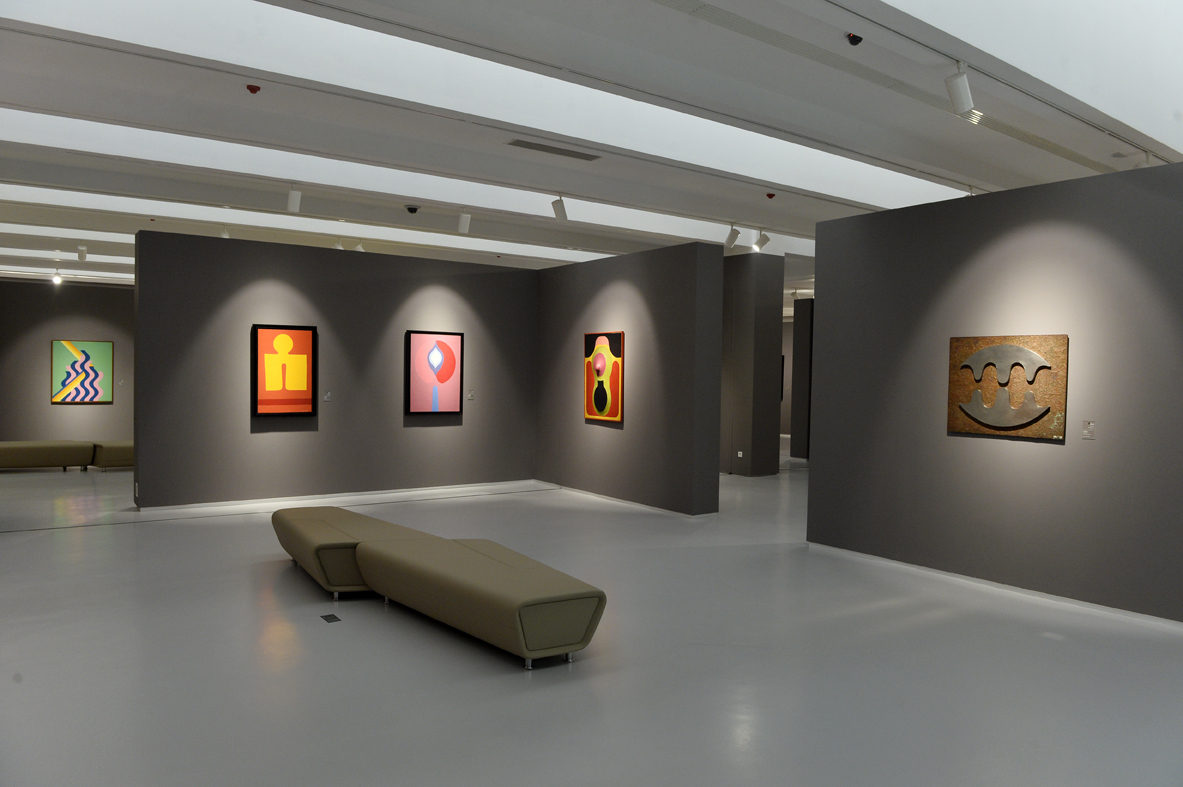
Key Collections and Exhibits at the Mohammed VI Museum
The Mohammed VI Museum of Modern and Contemporary Art, as a flagship institution for art in Morocco, features a wealth of collections and exhibits, covering various periods and art forms.
The museum’s collections include works from the early 20th century up to contemporary pieces, providing a comprehensive overview of the development of Moroccan and African art over the years. The collections are meticulously curated to highlight both the cultural richness and artistic evolution in the region.
Prominent Moroccan artists featured in the museum’s collections include Farid Belkahia, Mohamed Melehi, and Chaïbia Talal, among others. Their works span different mediums, such as painting, sculpture, and photography, showcasing the diverse artistic practices in Morocco.
Apart from its permanent collections, the museum also hosts temporary exhibitions. One of the notable exhibitions was ‘Face à Picasso’, held in 2018. This exhibition marked the first time Pablo Picasso’s works were displayed in the Maghreb region, showcasing over 100 works from different periods of Picasso’s career.
The museum is also known for hosting thematic exhibitions. For example, the exhibition on Benin’s contemporary art showcased the artistic dynamism and creative exploration of artists in Benin, linking it to broader conversations about African contemporary art.
The Mohammed VI Museum is not just limited to visual arts. It also features collections related to cinema, music, and literature, highlighting the cross-disciplinary approach to understanding culture and arts in Morocco and Africa.
The museum’s multimedia approach extends to its inclusion of new media arts. This reflects the museum’s forward-looking vision and its commitment to embracing the digital age, making art accessible and engaging to the new generation.
The curation at the museum ensures a visitor-friendly experience, with artworks arranged in a way that guides visitors through a chronological and thematic exploration of art history in Morocco and Africa.
The museum’s exhibits, in sum, provide a rich and engaging insight into the history and development of Moroccan and African art. By doing so, the museum fosters an appreciation of the cultural richness of Morocco and Africa and promotes dialogue between different cultures and time periods.
The Global Impact of the Mohammed VI Museum
The Mohammed VI Museum of Modern and Contemporary Art has made significant contributions to the global art scene since its inception. As Morocco’s first major modern art museum, it has been instrumental in elevating the status of Moroccan and African art on a global scale.
The museum’s comprehensive collections showcase the wealth of talent from Morocco and Africa, highlighting the cultural richness and diversity of these regions to the international audience. The presence of works by renowned Moroccan artists like Hassan Hajjaj and Chaïbia Talal alongside international figures such as Pablo Picasso, underscores the museum’s global outlook.
Through its temporary exhibitions, the museum creates a dialogue between Moroccan, African, and international art. Exhibitions such as ‘Face à Picasso’ and the exhibition on Benin’s contemporary art not only bring international art to Morocco but also link Moroccan and African art to broader global narratives.
The museum’s cross-disciplinary approach, covering visual arts, literature, music, and cinema, also contributes to its global appeal. By incorporating new media and digital art into its collections, the museum caters to a broader demographic and stays relevant in the digital age.
The architectural design of the museum, a blend of traditional Moroccan and contemporary styles, further solidifies its position in the global art scene. It’s a statement of the country’s intention to blend tradition with modernity, East with West.
The museum’s commitment to education and community outreach, through workshops, lectures, and events, helps to foster a global appreciation of Moroccan and African art. It connects people from different backgrounds and promotes cross-cultural understanding.
By serving as a venue for international conferences and cultural events, the museum has further established itself as a global cultural hub. It attracts cultural tourists from around the world, contributing to Morocco’s economic development.
In a nutshell, the Mohammed VI Museum plays a significant role in placing Moroccan and African art in a global context. Its collections, exhibitions, and initiatives make it a beacon of cultural exchange and artistic appreciation on the international stage.
| Category | Entry Fee | Timing |
|---|---|---|
| Adults | 40 DH | 10 a.m. to 6 p.m. |
| Young people from 12 to 18 years old | 20 DH | 10 a.m. to 6 p.m. |
| Under 12 years old | 10 DH | 10 a.m. to 6 p.m. |
N.B: closed Tuesday and public holidays.
Architectural Design and Cultural Relevance of the Mohammed VI Museum
The Mohammed VI Museum of Modern and Contemporary Art stands as a work of art in itself, with its architecturally significant structure complementing the rich collection of art it houses.
The museum was designed by the acclaimed Moroccan architect Karim Chakor, who seamlessly blended traditional Moroccan design elements with a modern architectural language. The result is a striking structure that visually narrates Morocco’s past and present.
Upon entering the museum, visitors are greeted by a massive facade made of white marble and glass. The facade’s geometric pattern is a nod to traditional Moroccan design, while its use of glass reflects the museum’s modernity and openness to the world.
Inside, the museum offers 4000 square meters of exhibition space spread over multiple floors. The spaces are thoughtfully designed to ensure a visitor-friendly experience, guiding guests through a chronological and thematic exploration of Moroccan and African art.
The museum’s layout emphasizes natural lighting, with skylights illuminating the exhibition spaces. This architectural choice not only creates an engaging environment for viewing art but also reflects the museum’s focus on sustainability.
Complementing the exhibition spaces are the museum’s educational facilities, including a library, a bookstore, and a 150-seat auditorium. These facilities highlight the museum’s commitment to education and community engagement, providing spaces for learning and discourse beyond the exhibitions.
The museum’s architecture also extends to its outdoor spaces. The surrounding gardens, dotted with sculptures and seating areas, offer a peaceful respite for visitors and a natural extension of the museum’s art experience.
The Mohammed VI Museum’s architecture thus plays a crucial role in its mission. It sets the stage for the museum’s art narrative, providing an environment that fosters engagement and appreciation of Moroccan and African art.
In essence, the museum’s architecture mirrors its overall philosophy – a blend of tradition and modernity, local and global, art and education. It’s a physical embodiment of Morocco’s cultural dynamism and its openness to the world.
Showcasing and Nurturing Moroccan and African Art at the Mohammed VI Museum
The Mohammed VI Museum of Modern and Contemporary Art plays a significant role in showcasing and nurturing Moroccan and African art. It’s a platform where the richness and diversity of these artistic traditions are celebrated and brought to the attention of a global audience.
The museum’s extensive collections of Moroccan and African art span various periods and styles, from early 20th century art to contemporary works. It offers a comprehensive view of the artistic evolution in these regions, highlighting the creativity and innovation of their artists.
The museum features works by numerous Moroccan artists such as Farid Belkahia, Mohamed Melehi, and Chaïbia Talal. The diversity of their art forms, from painting and sculpture to photography and new media, underscores the dynamism of Moroccan art.
Temporary exhibitions at the museum further enrich its showcase of Moroccan and African art. Thematic exhibitions, like the one dedicated to Benin’s contemporary art, highlight the vibrancy and variety within African art, connecting it to broader conversations about contemporary art worldwide.
The museum is also committed to nurturing future generations of Moroccan and African artists. It does this through various educational programs and workshops aimed at fostering creativity and critical thinking among young people. These initiatives ensure the continued growth and development of the art scene in Morocco and Africa.
By providing a global platform for Moroccan and African artists, the museum also enhances their visibility and recognition in the international art scene. It creates opportunities for cultural exchange, fostering a greater appreciation of the richness and diversity of Moroccan and African art worldwide.
Moreover, the museum promotes the idea of art as a medium for social change. By addressing relevant themes and issues in its exhibitions and programs, it encourages dialogue and reflection among its visitors.
The Mohammed VI Museum plays a vital role in the promotion and development of Moroccan and African art. It’s not just a showcase of art, but also a catalyst for artistic growth and cultural exchange.
| Day | Opening Hours |
|---|---|
| Monday | 10 a.m. to 6 p.m. |
| Tuesday | Closed |
| Wednesday | 10 a.m. to 6 p.m. |
| Thursday | 10 a.m. to 6 p.m. |
| Friday | 9:45 a.m. to 6 p.m. |
| Saturday | 10 a.m. to 6 p.m. |
| Sunday | 10 a.m. to 6 p.m. |
Making the Most Out of Your Visit to the Mohammed VI Museum
When planning a visit to the Mohammed VI Museum of Modern and Contemporary Art, a few tips can help ensure a fulfilling and enriching experience.
Before your visit, explore the museum’s website to familiarize yourself with its current exhibitions and events. Having a sense of what you’ll see can help you better plan your visit and make the most out of your time at the museum.
Upon arrival, consider starting your tour from the top floor and working your way down. This will guide you through a chronological journey of Moroccan and African art, from the early 20th century to contemporary works.
While touring the museum, take the time to appreciate not just the artwork but also the building’s architecture. The museum’s design is a blend of traditional Moroccan and contemporary styles, reflecting the same interplay between tradition and modernity found in the art it houses.
Remember that art is not meant to be rushed. Allow yourself to spend time with each artwork, observing the details, and contemplating its message. Each piece is a window into the artist’s mind and the cultural context in which it was created.
Beyond the exhibitions, make sure to explore the museum’s educational offerings. Attend a lecture or a workshop if one coincides with your visit. These events provide deeper insights into the exhibited art and offer opportunities to engage with the art community.
The museum’s library is another resource worth exploring. It houses a vast collection of books and documents related to art and culture, enriching your understanding of Moroccan and African art.
Don’t forget to visit the museum’s bookstore before you leave. Here, you can find catalogs of past exhibitions, art books, and souvenirs to remember your visit.
Finally, allow some time to relax in the museum’s garden. Surrounded by sculptures and offering a respite from the bustling city, it’s the perfect spot to reflect on your museum visit.
In conclusion, a visit to the Mohammed VI Museum is more than just viewing art. It’s an immersive cultural experience that can be enriched with careful planning and an open mind.
Prominent Artists Featured in the Mohammed VI Museum
The Mohammed VI Museum of Modern and Contemporary Art boasts a diverse collection of works from numerous Moroccan and African artists. This richness highlights the variety and evolution of art in these regions.
One of the most recognized artists featured in the museum is Farid Belkahia, a pioneer of modern Moroccan art. Belkahia is known for his innovative use of natural materials and his blend of traditional Moroccan techniques with modernist aesthetics.
Mohamed Melehi is another prominent figure in the museum’s collection. Known for his abstract paintings featuring vibrant colors and rhythmic patterns, Melehi is a key player in the Casablanca Art School movement that revolutionized Moroccan art in the 1960s.
Chaïbia Talal, a self-taught artist, is also represented in the museum. Talal’s bold and expressive paintings draw inspiration from her rural upbringing, and she is celebrated as one of Morocco’s leading female artists.
The museum’s collection extends beyond Moroccan artists. It also includes African artists, such as El Anatsui from Ghana, whose large-scale sculptural installations made from discarded bottle caps have been acclaimed internationally.
In its temporary exhibitions, the museum has featured international artists like Pablo Picasso. The ‘Face à Picasso’ exhibition showcased over a hundred works from different periods of Picasso’s career, marking his first major exhibition in the Maghreb region.
The museum’s focus on contemporary art has also led to the inclusion of new media artists like Mounir Fatmi. Fatmi’s works engage with issues of identity, technology, and globalization, reflecting the concerns of the contemporary world.
The Mohammed VI Museum showcases a diverse array of artists, both established and emerging, local and international. This diversity reflects the museum’s commitment to presenting a comprehensive and inclusive view of art in Morocco, Africa, and beyond.
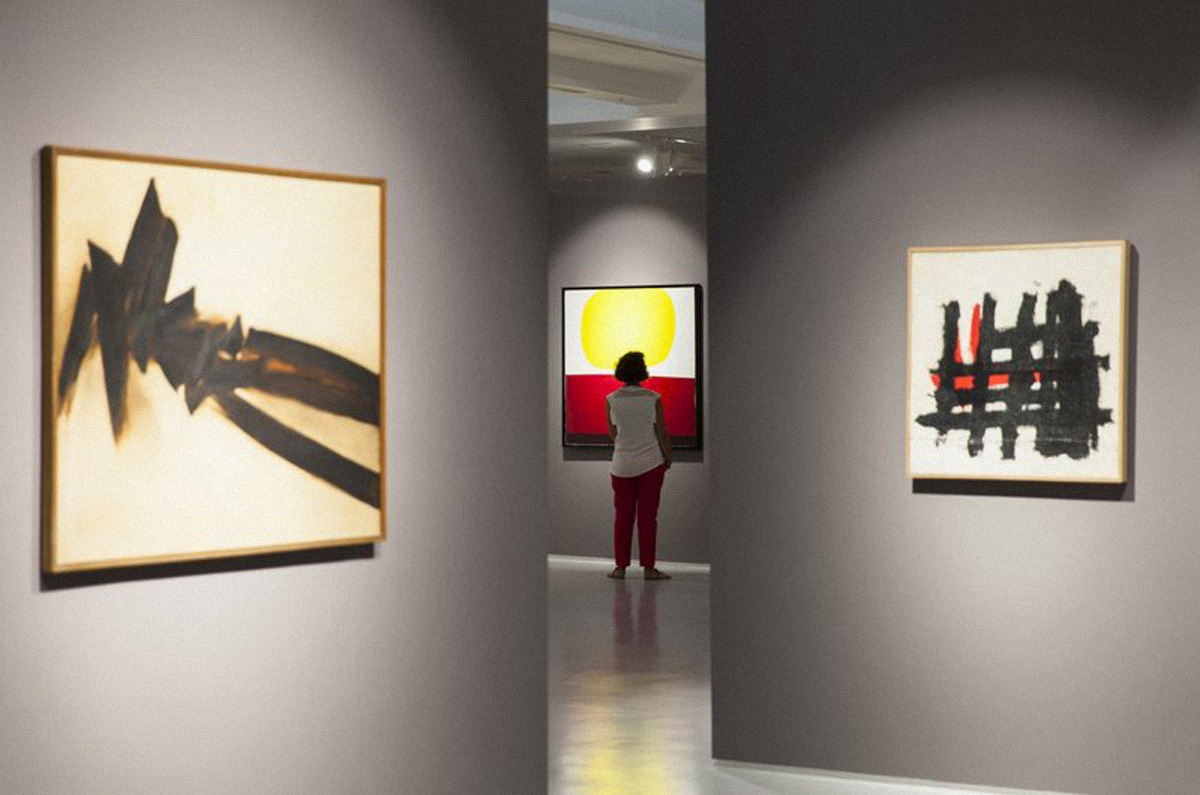
Community Outreach and Education at the Mohammed VI Museum
The Mohammed VI Museum of Modern and Contemporary Art places a strong emphasis on education and community outreach, considering these elements integral to its mission.
The museum runs numerous educational programs designed to engage a broad audience, ranging from school children to art professionals. These programs aim to cultivate an understanding and appreciation of Moroccan and African art, fostering a culture of creativity and critical thinking.
School visits form a significant part of the museum’s education initiative. Guided tours and workshops tailored for students offer an interactive learning experience, making art accessible and engaging for younger audiences. Such programs expose children to art from an early age, fostering their creative potential and broadening their cultural horizons.
For the general public, the museum organizes regular lectures, discussions, and seminars featuring artists, curators, and scholars. These events provide an opportunity for attendees to deepen their understanding of art and engage in intellectual discourse.
In collaboration with other cultural institutions, the museum also hosts international conferences and symposiums. These events bring together experts from around the world, contributing to the global dialogue on art and culture.
Community outreach is another cornerstone of the museum’s activities. The museum partners with local organizations to run art projects in communities around Morocco. By taking art outside the traditional museum space, these projects aim to make art more accessible and foster a sense of community engagement.
The museum’s commitment to education extends to its digital presence. Through its website and social media channels, the museum shares educational content and keeps its audience informed about its activities. In this way, the museum reaches a global audience, extending its educational mission beyond physical boundaries.
In conclusion, the Mohammed VI Museum plays a pivotal role in promoting art education and community engagement in Morocco. By doing so, it contributes to the cultural development of the society and encourages a broader appreciation of art.
Future Exhibitions and Events at the Mohammed VI Museum
While the Mohammed VI Museum of Modern and Contemporary Art continues to enrich its permanent collections, it also places a strong emphasis on hosting diverse temporary exhibitions and events. These initiatives ensure the museum remains a dynamic platform for art, culture, and education.
Although the exact lineup of future exhibitions and events is subject to change, the museum’s past programming gives an insight into what visitors can expect. This includes solo exhibitions dedicated to prominent Moroccan and African artists, thematic exhibitions exploring specific art movements or social issues, and international exhibitions featuring renowned artists from around the world.
For instance, the museum has previously hosted a successful exhibition dedicated to Pablo Picasso’s work, marking the first time the iconic artist’s work was displayed in the Maghreb region. This sets a precedent for future exhibitions that could bring other significant international artists to the museum.
The museum also embraces contemporary art forms and technologies in its future programming. Expect to see exhibitions and events related to new media art, digital art, and experimental practices, reflecting the museum’s commitment to being a forward-thinking institution.
In terms of events, the museum’s future plans include a variety of lectures, workshops, and educational programs catering to different age groups and interests. These events aim to foster a deeper engagement with art, encourage creativity, and facilitate cultural discussions.
To stay updated on the museum’s future exhibitions and events, visitors are advised to regularly check the museum’s website or subscribe to its newsletter. Doing so will ensure they do not miss out on any exciting developments at this cultural landmark.
In conclusion, the Mohammed VI Museum is set to continue its vibrant programming of exhibitions and events, contributing to Morocco’s cultural scene and promoting Moroccan and African art on a global scale.
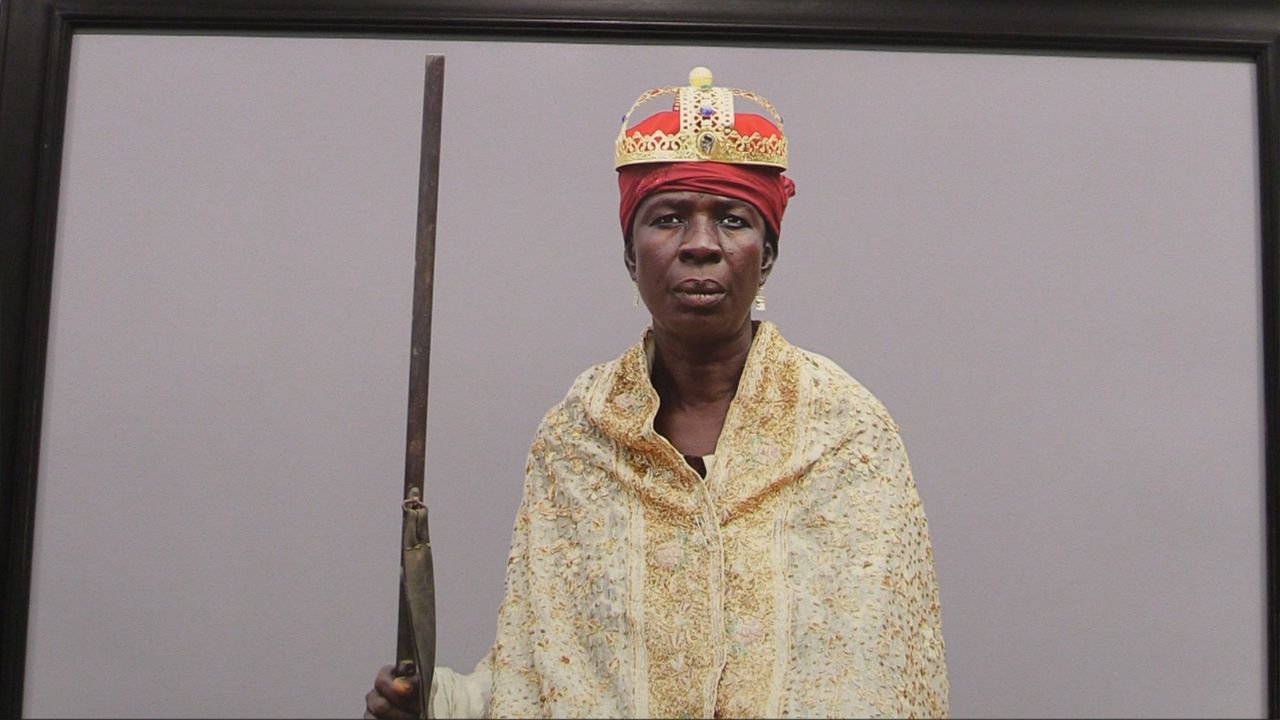
The Role of Digital Innovation at the Mohammed VI Museum
The Mohammed VI Museum of Modern and Contemporary Art, while deeply rooted in the rich cultural history of Morocco and Africa, is also a forward-looking institution embracing digital innovation.
Digital technology is increasingly reshaping the way art is created, experienced, and shared. Recognizing this, the museum has integrated digital practices into its operations, making art more accessible and engaging for today’s digital-savvy audience.
One of the ways the museum utilizes digital technology is through its online presence. The museum’s website offers a wealth of information about its collections, exhibitions, and events. It also provides digital resources like virtual tours and online galleries, allowing visitors to explore the museum from anywhere in the world.
The museum’s commitment to digital innovation extends to its exhibitions. It includes new media arts in its collections, reflecting the evolving nature of art in the digital age. By doing so, it connects with a younger demographic and keeps pace with contemporary art practices.
Educational programming at the museum also incorporates digital elements. The museum uses digital tools to facilitate learning and make its educational content more interactive. This includes online workshops, webinars, and digital resources for educators.
Furthermore, the museum uses digital platforms for community engagement. It leverages social media to reach a wider audience, share updates, and engage with its followers. This approach helps the museum to build a digital community of art enthusiasts.
The museum’s adoption of digital practices also reflects its sustainability efforts. By offering digital resources, the museum reduces its reliance on physical materials, aligning with global efforts towards environmental sustainability.
In conclusion, the Mohammed VI Museum plays an important role in promoting digital innovation in the art sector. By doing so, it enhances the art experience for its audience, supports contemporary art practices, and contributes to sustainability. This digital-forward approach ensures the museum stays relevant in the evolving art landscape and continues to lead in the promotion of Moroccan and African art.
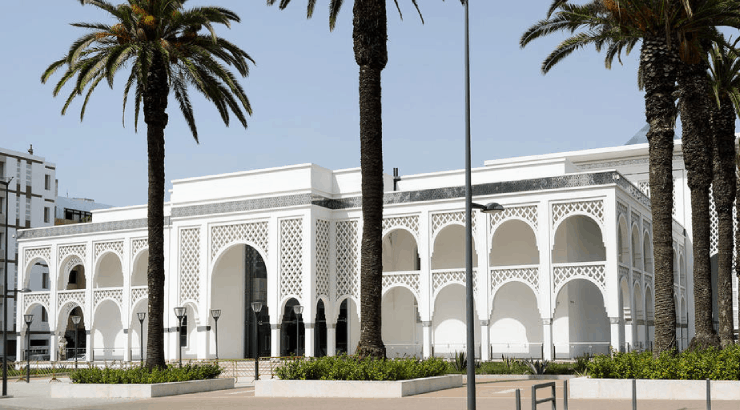
| Article Topic | Key Points |
|---|---|
| Historical Significance of the Museum | First major museum in Morocco in over a century, hosts historical exhibitions, symbolizes Morocco's dedication to culture and arts. |
| Key Collections and Exhibits | Features collections from early 20th century to contemporary works, hosts thematic and temporary exhibitions, includes diverse art forms. |
| Global Impact of the Museum | Showcases Moroccan and African art to the global audience, hosts international exhibitions, promotes cross-cultural understanding, serves as a cultural hub. |
| Architectural Design and Cultural Relevance | Combines traditional Moroccan design with modern architecture, designed for an immersive art experience, emphasizes sustainability. |
| Showcasing and Nurturing Moroccan and African Art | Provides a comprehensive overview of Moroccan and African art, features works by renowned local artists, runs educational programs to nurture future generations of artists. |
| Making the Most Out of Your Visit | Plan your visit by exploring the museum's website, appreciate the architecture, participate in educational programs, visit the museum's bookstore and garden. |
| Prominent Artists Featured | Features works by Farid Belkahia, Mohamed Melehi, Chaïbia Talal, El Anatsui, Pablo Picasso, and Mounir Fatmi, among others. |
| Community Outreach and Education | Offers school visits, lectures, and workshops, hosts international conferences, runs community outreach programs, provides digital educational content. |
| Future Exhibitions and Events | Hosts diverse temporary exhibitions and events, embraces contemporary art forms and technologies, plans to continue its programming of educational events. |
FAQs
What is the Mohammed VI Museum of Modern and Contemporary Art?
The Mohammed VI Museum of Modern and Contemporary Art, located in Rabat, Morocco, is a leading institution dedicated to promoting Moroccan and African art. The museum, which opened in 2014, showcases an extensive range of artwork from the early 20th century to contemporary pieces, hosting both permanent collections and temporary exhibitions.
Who are some of the prominent artists featured in the museum?
The museum’s collections feature works from numerous Moroccan artists such as Farid Belkahia, Mohamed Melehi, and Chaïbia Talal. In addition, the museum has showcased international artists like Pablo Picasso and African artists like El Anatsui in its temporary exhibitions.
What kind of educational programs does the museum offer?
The museum runs a variety of educational programs, including school visits, workshops, lectures, and seminars. These initiatives aim to foster an understanding and appreciation of art, cultivate creativity, and promote intellectual discourse.
How can I make the most out of my visit to the museum?
To ensure a fulfilling visit, familiarize yourself with the museum’s current exhibitions and events before your visit. During your tour, take time to appreciate each artwork and the museum’s architecture. Participate in the museum’s educational offerings if available during your visit, and visit the museum’s bookstore and garden before leaving.
How does the museum contribute to the global art scene?
The Mohammed VI Museum contributes to the global art scene by showcasing the richness and diversity of Moroccan and African art to an international audience. The museum hosts international exhibitions and cultural events, fostering a global appreciation of Moroccan and African art.
What does the museum’s architecture signify?
The museum’s architecture, designed by Moroccan architect Karim Chakor, blends traditional Moroccan design elements with a modern architectural language. This blend symbolizes Morocco’s cultural dynamism and its blending of tradition with modernity.
What can we expect from the museum’s future exhibitions and events?
While specific future exhibitions and events are subject to change, you can expect the museum to continue hosting a vibrant array of temporary exhibitions, educational programs, and cultural events. These initiatives aim to enrich visitors’ understanding of art, foster creativity, and facilitate cultural discussions.

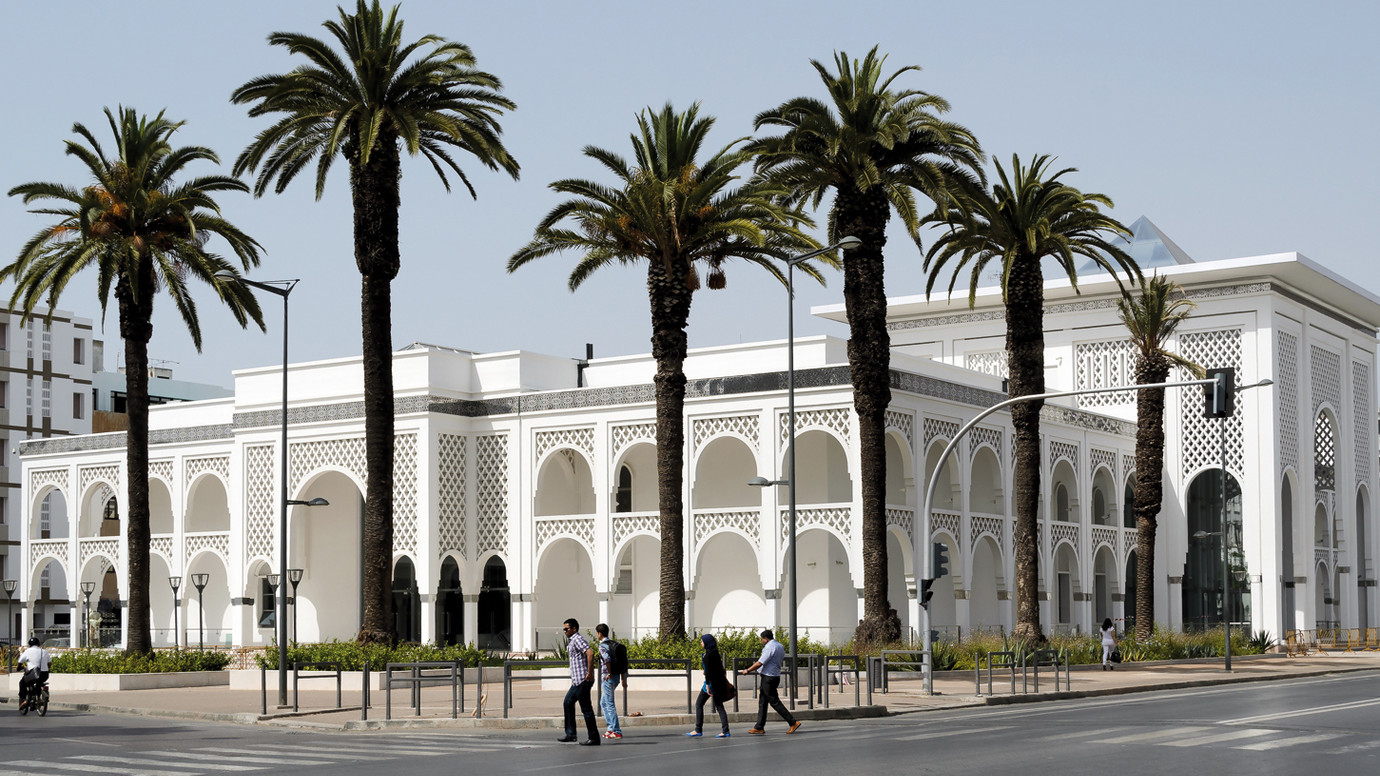
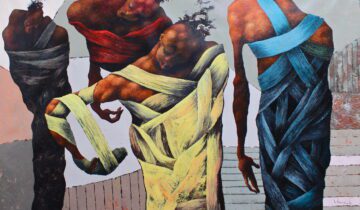
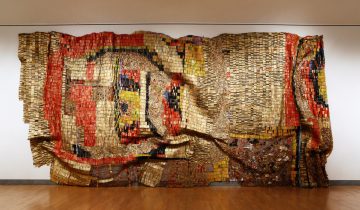
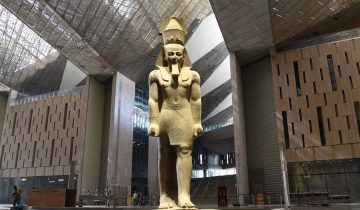
 No products in the basket.
No products in the basket.